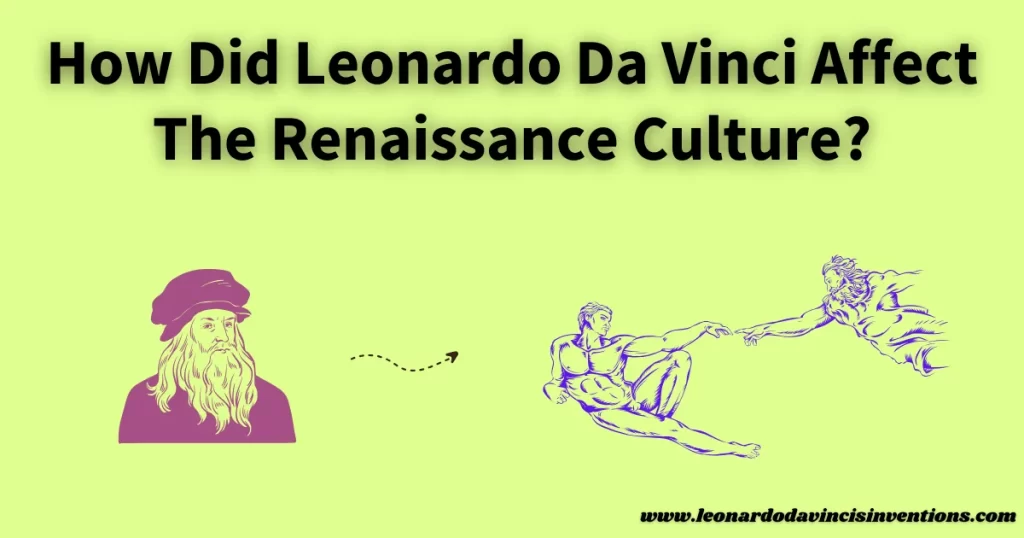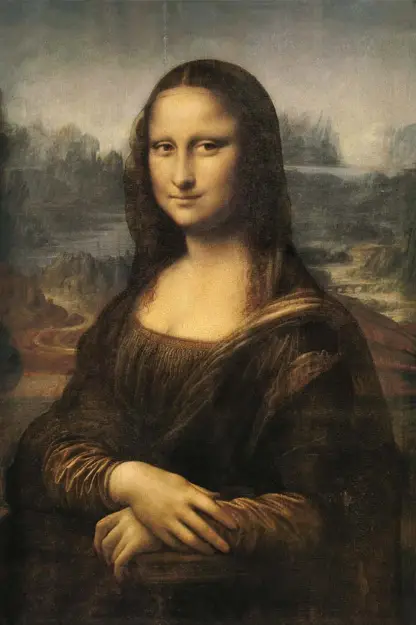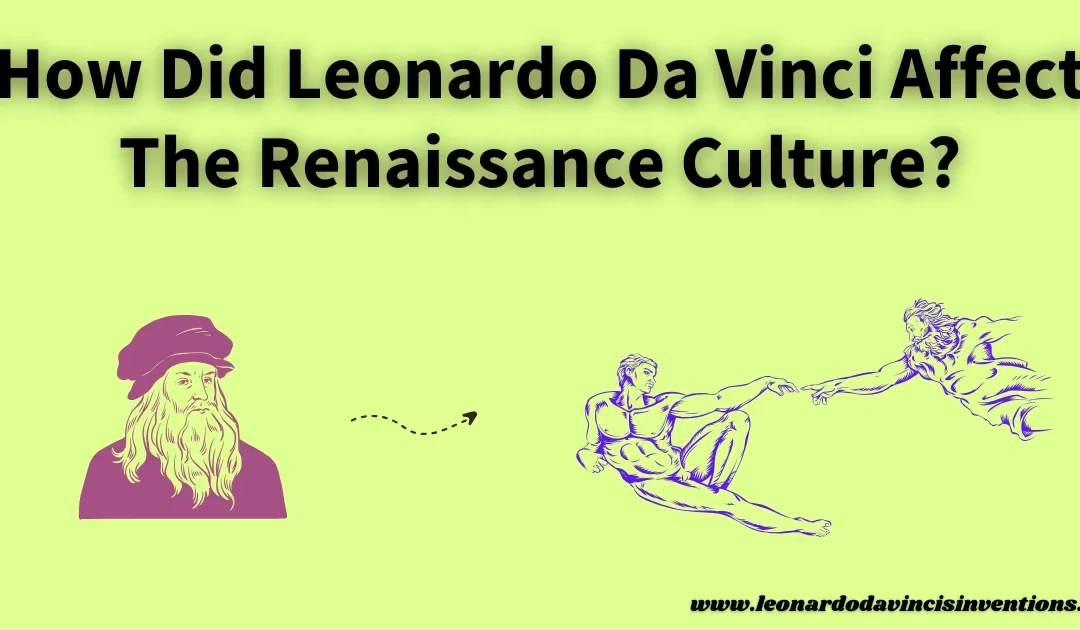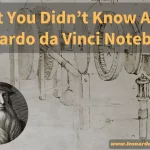
How Did Leonardo Da Vinci Affect The Renaissance? This question opens the door to one of history’s most fascinating stories.
You may wonder how one person could simultaneously shape art, science, and culture, and why his impact still matters today.
This article explores how Leonardo left a lasting mark on the Renaissance and brings together well-known and surprising facts.
Leonardo da Vinci changed the Renaissance culture by blending art and science, creating new ways of thinking, and helping to set modern standards in painting and scientific study.
Leonardo encouraged others to see the world differently through his paintings, inventions, and detailed notebooks. He advanced ideas that inspired later artists and scientists.
Leonardo’s influence is evident when you look at his role as a true Renaissance man, combining creativity and discovery.
His life and work made the Renaissance a time of new beginnings, changing how people created and understood knowledge.
Leonardo Da Vinci’s Role as a Renaissance Man and Cultural Innovator
Leonardo da Vinci transformed art and science through creativity, critical thinking, and careful observation.
He connected painting, anatomy, and engineering, shaping Renaissance culture and inspiring future generations.
The Renaissance Spirit Embodied by Leonardo da Vinci
Leonardo da Vinci represented the ideal Renaissance man.
He worked in art, science, and engineering.
Leonardo’s work focused on classical knowledge, innovation, and personal achievement.
His masterpieces, like the Mona Lisa and The Last Supper, show the era’s passion for realism and perspective in painting.
Leonardo adopted new artistic techniques, such as sfumato, making his paintings lifelike.
He believed observation was key for learning and influenced artists and thinkers to look closely at nature.
His commitment to studying the world helped others value careful research and experimentation.
How Leonardo’s Interdisciplinary Approach Fueled Innovation
Leonardo explored many subjects instead of focusing on just one.
He used an interdisciplinary approach that combined painting, anatomy, engineering, and architecture.
For example, his anatomical drawings improved his art and advanced scientific study of the body.
Table: Leonardo’s Fields of Work and Key Contributions
| Field | Notable Work/Impact |
|---|---|
| Art | Mona Lisa, The Last Supper |
| Anatomy | Detailed studies of the human body |
| Engineering | Designs for bridges and machines |
| Architecture | Urban planning sketches and ideas |
Leonardo created new ideas and inventions by combining knowledge from different fields, such as sketches for flying machines and unique mechanical devices.
His thinking inspired others during the Renaissance to cross boundaries between subjects and search for creative solutions.
Leonardo’s Intellectual Curiosity and Its Cultural Impact
Leonardo’s curiosity led him to fill dozens of notebooks with scientific sketches, nature studies, and questions about how things work.
These notebooks included ideas on human anatomy, water movement, leaf shapes, and urban planning.
He practiced detailed observation and experimentation, often using a scientific method before it was fully developed.
His studies helped promote the idea that knowledge comes from careful observation and direct experience.
This approach influenced artists, scientists, engineers, and thinkers, encouraging a culture of curiosity and learning.
The Influence of Humanism and Renaissance Ideals in His Work
Humanism shaped Leonardo’s philosophy of art and science.
He believed humans could understand and shape the world.
In his paintings, he showed realistic emotions and used perspective to create three-dimensional scenes.
Leonardo studied classical texts and applied their ideas to new questions about science and art.
He admired nature and believed art should reflect its proper form.
This commitment advanced artistic realism and scientific progress, making him a leading figure in spreading humanist values.
Leonardo’s Legacy as a Multidisciplinary Genius in Renaissance Culture
Leonardo da Vinci set new standards for artistic and scientific excellence.
He encouraged detailed study and experimentation.
Artists and inventors looked to his example for inspiration in creativity and innovation.
His masterpieces, designs, and scientific discoveries continue to inspire.
Leonardo’s fusion of art and science remains central to understanding Renaissance intellectualism and the pursuit of knowledge.
He showed that creative problem-solving can connect many fields, leaving a lasting mark on culture and progress.
Artistic Mastery and Scientific Exploration in Leonardo’s Renaissance Contributions

Leonardo da Vinci reshaped Renaissance culture through his art, scientific work, and curiosity.
His drive for accuracy and realism set new standards and helped blend creative skills with scientific discovery.
Masterpieces That Defined Renaissance Art: Mona Lisa and The Last Supper
Leonardo’s most famous paintings, the Mona Lisa and The Last Supper, show innovation and mastery in Renaissance art.
The Mona Lisa’s mysterious smile and realistic background reveal his careful study of emotion and landscape.
Leonardo used sfumato to blend colors and edges to create lifelike skin and subtle lighting.
The Last Supper shows careful organization, with figures arranged in groups to draw attention to Christ at the center.
Leonardo’s use of perspective and proportion tells the story and gives depth to the scene.
These works inspired generations of artists by showing how emotion, realism, and story could be combined in painting.
Artistic Techniques and Naturalism: Revolutionizing Painting and Drawing
Leonardo led the development of new artistic techniques that helped the Renaissance movement focus on naturalism.
He studied how light and shadow changed how things looked, improving his ability to make objects seem three-dimensional.
He experimented with perspective in every painting and drawing, creating realistic spaces that felt true to life.
By closely observing nature, Leonardo learned about structure, movement, and how forms fit together.
This approach improved his images of people, animals, and plants and set a model for other artists who wanted their work to be more accurate.
His notebooks are filled with sketches of landscapes, people, and animals, showing his dedication to the study of nature and experimentation.
The Fusion of Scientific Observation and Artistic Realism
Leonardo combined careful observation with artistic creativity.
He based his art on what he could see and measure, using scientific principles for more precise results.
Through scientific observation, he studied how muscles, bones, shadows, and reflections worked in real life.
He treated art and science as linked subjects, using his studies to improve his pictures and scientific diagrams.
This interdisciplinary approach laid the foundation for more accurate representations and inspired a new way of thinking in both fields.
Anatomy Studies and Human Body Representation in Leonardo’s Art
Leonardo spent years studying anatomy.
He dissected bodies to learn how muscles, bones, and organs worked.
This allowed him to draw and paint the human form with great precision.
His detailed drawings, such as the “Vitruvian Man,” show his understanding of proportion and human structure.
This attention to detail changed how artists approached representation and set new standards for anatomy studies during the Renaissance.
His findings also helped doctors and scientists better understand human biology, linking artistic influence with advances in medicine and science.
How Leonardo’s Detailed Studies Advanced Both Art and Science
Leonardo created many sketches, diagrams, and notes showing his artistic talent and scientific curiosity.
He explored engineering, architecture, mechanical inventions, and cartography.
He used illustration to record new devices, anatomical discoveries, and early drafts for flying machines.
His detailed studies helped bridge the gap between art and science, making it easier for others to learn from his work and build on his ideas.
Leonardo’s focus on knowledge, observation, and the connection between artistic and scientific progress represents the spirit of Renaissance intellectualism and innovation.
Leonardo Da Vinci’s Innovations in Science, Engineering, and Urban Planning
Leonardo da Vinci brought together observation, experimentation, and creativity.
He worked in many fields and changed people’s views of knowledge, city life, scientific progress, and the artist’s role during the Renaissance.
Leonardo’s Contributions to Engineering and Mechanical Inventions
Leonardo da Vinci created detailed sketches of machines far ahead of his time.
He designed early versions of helicopters, tanks, and gear-driven devices, showing his deep interest in engineering and innovation.
His notebooks include clear diagrams that explain how levers, pulleys, and gears work together.
Some of his inventions, including a self-propelled cart and a mechanical knight, showed his understanding of mechanical motion.
These creative concepts went beyond art and entered practical engineering.
His ideas, especially those related to flight, inspired future inventions.
His engineering work influenced the Renaissance view of technology and progress.
Advancements in Architecture and Urban Planning Inspired by Leonardo
During the Renaissance, Leonardo da Vinci studied building and city design with a scientific approach. He believed well-planned city layouts could improve public health and daily life.
Leonardo’s drawings show modern street grids and water systems. He also suggested separating the dirty and clean parts of a city.
His designs included open spaces and squares to encourage community gatherings. He used perspective and proportion to create functional and beautiful buildings.
Many of his large city projects were never built. Still, his ideas influenced Renaissance architects and improved urban planning practices.
Cartography and Scientific Diagrams: Mapping Renaissance Knowledge
Leonardo da Vinci’s interest in maps and diagrams set new cartography and scientific illustration standards. He based maps like those of Imola on direct observation and careful measurement.
He used advanced techniques to make maps more accurate than earlier ones. Leonardo filled his notebooks with clear, labeled scientific diagrams.
He drew human muscles, plant roots, and rock layers. These visuals made complex ideas easier to understand and helped spread knowledge about anatomy, biology, and geology.
His approach connected scientific discovery with the visual arts. This set a standard for future scientific communication.
Experimentation and the Scientific Method in Leonardo’s Work
Leonardo da Vinci experimented in ways similar to the modern scientific method. He observed nature, repeated his studies, and wrote down results to test his ideas.
Leonardo’s notebooks contain questions, experiments, and measurements. For example, he studied blood flow in veins, bird flight, and water movement in natural channels.
He valued hands-on learning and questioned knowledge that came only from books. Leonardo’s focus on experimentation encouraged the use of evidence during the Renaissance.
Frequently Asked Questions
Leonardo da Vinci changed how people viewed art, science, and learning during the Renaissance. His creative inventions, detailed studies of nature, and famous paintings left a lasting mark on culture and history.
What was Leonardo da Vinci’s impact on the Renaissance?
Leonardo da Vinci influenced the Renaissance by pushing the boundaries of art and science. His paintings, like the Mona Lisa, set new standards for realism and technique.
He also studied the human body, created detailed sketches, and designed inventions that inspired future generations.
How did Leonardo da Vinci contribute to the Renaissance Quizlet?
On platforms like Quizlet, Leonardo da Vinci’s contributions to the Renaissance include his advancements in painting, anatomy, engineering, and architecture. Students learn that he improved perspective in art and made discoveries in science and technology ahead of his time.
What was Leonardo da Vinci’s biggest impact?
Leonardo da Vinci’s most significant impact was blending science and art in a new way. He helped shape the idea of the “Renaissance man,” someone skilled in many fields.
His work in painting, such as using light and shadow, changed how artists approached their craft.
How did art impact the Renaissance?
Art during the Renaissance focused more on realism, the study of anatomy, and the use of perspective. Artists like Leonardo da Vinci inspired new techniques and a better understanding of the human form, making artwork more lifelike and expressive.
How did the Mona Lisa impact the Renaissance?
The Mona Lisa changed the art world by showing new ideas about portrait painting. Leonardo’s use of sfumato (soft edges and blending) and attention to detail set a new standard.
The painting symbolized the Renaissance’s focus on realism and individual expression.
What was Leonardo da Vinci’s IQ?
No official test or record of Leonardo da Vinci’s IQ exists from his lifetime. Some experts believe he had high intelligence, but any specific number is just speculation.
What were the effects of the Renaissance?
The Renaissance led to significant societal changes, including new ideas about art, science, and human potential. It encouraged learning, the spread of books, and more questioning of old beliefs.
Artists, scientists, and thinkers like Leonardo da Vinci helped shape a new worldview during this period.
Which artist most embodied the spirit of the Renaissance?
Leonardo da Vinci is often considered the artist who best represented the Renaissance spirit. His work combined curiosity, creativity, and knowledge across many areas.
He is a key figure in Renaissance art and culture, along with Michelangelo and Raphael.
What started the Renaissance period?
The Renaissance began in Italy in the late 1300s. The rediscovery of ancient Greek and Roman knowledge, new wealth from trade, and changes in society that valued education and discovery all played a role.
Why does Leonardo da Vinci fit the term Renaissance man?
Leonardo da Vinci fits the term “Renaissance man” because he excelled in many fields. He was an accomplished painter, scientist, engineer, inventor, and thinker.
His broad interests and talents make him the classic example of a true Renaissance man.




 Leonardo Bianchi,
the creator of Leonardo da Vinci's Inventions.
Thank you for visiting
Leonardo Bianchi,
the creator of Leonardo da Vinci's Inventions.
Thank you for visiting